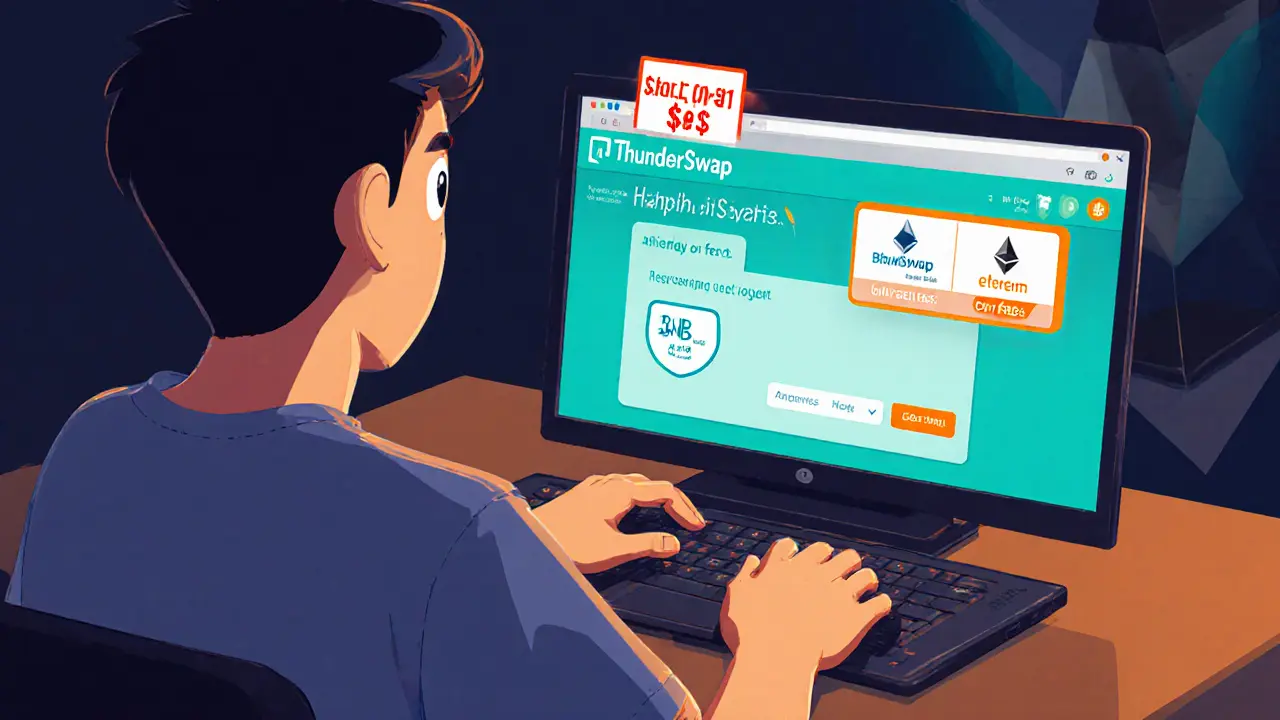When working with BSC decentralized exchange, a set of platforms on Binance Smart Chain that let users trade tokens without a central order book. Also known as Binance Smart Chain DEX, it powers fast swaps, low‑cost liquidity, and a growing DeFi ecosystem. One of the most talked‑about projects is ThunderSwap, a BSC DEX focused on low fees and native TNDR token incentives, sometimes called ThunderSwap exchange. Another heavyweight is PancakeSwap, the most popular BSC DEX known for its farm, lottery and CAKE token rewards, also referred to as CAKE DEX. Together these platforms illustrate how the BSC decentralized exchange ecosystem balances speed, cost, and community incentives. The core idea is simple: users connect a wallet, select a token pair, and let the smart contract handle the trade. This model removes middlemen, reduces slippage, and opens opportunities for anyone with an internet connection. As a result, the BSC DEX scene has become a testing ground for new yield‑farming strategies, token launches, and cross‑chain bridges. If you’re curious about how fees are calculated, why liquidity matters, or what security checks are built in, keep reading – the next sections break it all down.
One of the biggest draws of a BSC decentralized exchange is the low transaction cost. Because BSC uses a delegated‑proof‑of‑stake model, gas fees are often a fraction of what you’d pay on Ethereum, making small‑scale swaps viable. Fees are usually expressed as a percentage of the trade, with part of that going to liquidity providers (LPs) as a reward for locking assets in Liquidity Pools, smart contracts that hold paired tokens to enable instant swaps. The more depth a pool has, the less price impact you’ll see, which is why popular pairs on PancakeSwap and ThunderSwap attract massive capital. Another feature is native tokens like CAKE or TNDR that grant voting rights, staking bonuses, and extra fee rebates – they turn ordinary users into semi‑governors of the platform. Security is baked in through audits, bug bounties, and on‑chain monitoring; however, no DEX is immune to exploits, so always check the audit history before committing large sums. Yield farming adds another layer: you can stake LP tokens to earn additional yields, but you also expose yourself to impermanent loss if the price ratio shifts dramatically. Understanding these dynamics helps you decide whether a simple swap, a liquidity‑providing stint, or a full‑blown farm fits your risk appetite.
Putting it all together, the BSC decentralized exchange landscape is a mix of fast, cheap trades, community‑driven incentives, and evolving security practices. Whether you’re chasing the next high‑APY farm on ThunderSwap, swapping a new meme token on PancakeSwap, or just moving stablecoins across chains, the principles remain the same: low‑fee swaps, liquidity pool economics, and token‑based rewards shape the experience. Below you’ll find a curated list of articles that dive deeper into each of these topics – from detailed reviews of individual DEXs and fee structures to step‑by‑step guides on yield farming and risk management. Explore the posts to sharpen your strategy, compare platforms, and stay ahead in the fast‑moving BSC DeFi world.

A detailed 2025 review of ThunderSwap DEX, covering its technology, token, security, market data, and whether it's worth using.